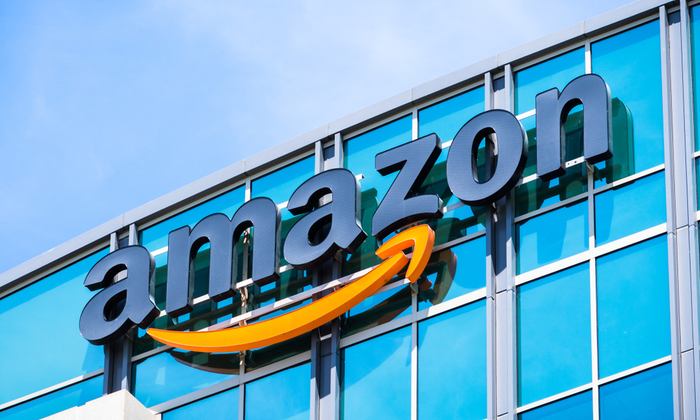
Every Amazon seller knows how difficult it is to track and measure the impact of external advertising channels on sales. It doesn’t matter how you are driving clicks to your Amazon page; once consumers land on the website, it’s anyone’s guess what happens.
Thankfully, that’s not the case anymore. Amazon Attribution makes it possible for certain sellers to track what happens to every user they send to the platform. In this post, I’ll explain everything you need to know about Amazon Attribution, including:
- who can use Amazon Attribution
- the benefits of using Amazon Attribution
- how to set up Amazon Attribution
- what you can track using Amazon Attribution
What Is Amazon Attribution?
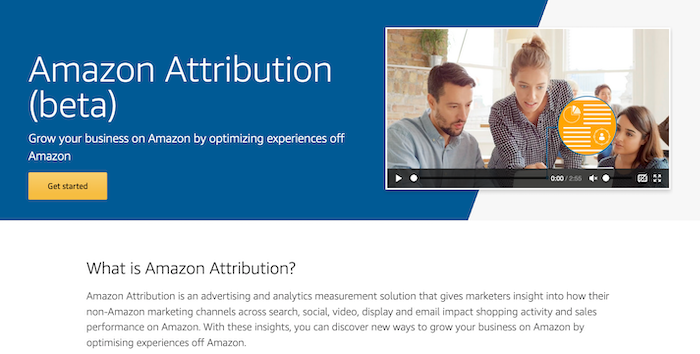
Amazon Attribution is a new tool that promises to grow your Amazon business by improving experiences away from the Amazon platform.
Specifically, the tool provides analytics insight into how non-Amazon marketing channels like search, social media, display, PPC, and email marketing impact sales on Amazon. It can also track traffic sent to a different website that ultimately converts on Amazon.
Access to Amazon Attribution is available through either the platform’s self-service console or through tools that already integrate with the Amazon Advertising API.
What Does Amazon Attribution Cost?
Amazon Attribution is currently available for free, which is great news for e-commerce owners.
Who Can Use Amazon Attribution?
Amazon Attribution is currently only available to sellers enrolled in Amazon Brand Registry and Vendors in the U.S., Canada, the U.K., Germany, Spain, France, and Italy. That may change in the future, so keep your eyes peeled if you are in other locations.
What Can You Track Using Amazon Attribution?
Amazon Attribution lets you track a range of metrics that can impact e-commerce sales, including:
- click-throughs
- impressions
- detailed page views
- purchase rate
- add to cart
- total sales
How Does Amazon Attribution Work?
Amazon Attribution uses parameterized URLs—essentially a tracking URL. When users click on the link and go to your store, Amazon can track precisely what they do.
It’s a bit like a combination of Facebook’s Pixel and Google Analytics. Everything users do once they click on your ad is tracked, and you can see it all in an easy-to-use dashboard.
4 Amazon Attribution Features You’ll Want to Try
Amazon Attribution isn’t just a URL tracking tool. It has several key features marketers will want to leverage.
1. Full-Funnel Amazon Analytics
Amazon Attribution significantly increases the number of sales funnel data brands have access to. You’re not just limited to conversion data. Instead, Amazon lifts the curtain on how consumers interact with your product on their platform, providing metrics like clicks, detailed page views, and how many times customers add your product to their basket.
2. On-Demand Amazon Conversion Metrics
You can see campaign performance as and when it happens. Real-time reporting means marketers can optimize their marketing campaigns faster than ever before.
3. Customer Insights
Because of the wealth of metrics Amazon Attributes provides, marketers can understand how the users they send to their store behave once they get there. Do they add the product to their basket as soon as they land on a page? Do they find a different product they prefer? Do they not buy anything at all? Amazon Attribution lets you answer all those questions and more.
4. Separate Tracking for Each Advertising Channel
Amazon Attribution lets marketers create different tags for every marketing channel. Facebook Ads, Google AdWords, blog posts, social media posts, it doesn’t matter. You can make hundreds of tags so you always get granular detail on the performance of every channel.
Why Is Amazon Attribution Such a Big Deal?
It’s not an overstatement to say Amazon Attribution could be a transformational tool for sellers and vendors. Before the tool was created, tracking off-Amazon marketing campaigns was an absolute nightmare.
There was simply no way to differentiate traffic from separate marketing channels. It was all dumped together.
Let’s say you made 500 sales, and you know that your own Amazon ads generated 100 of them. That leaves 400 sales that could have come from any marketing channel or even through an organic Amazon listing.
Do you see what a problem that is for marketers trying to find the best channel? There’s no way they can tell.
Amazon Attribution changes everything completely. Now marketers and brands will be able to see precisely where each sale comes from, and that comes with a bunch of benefits.
3 Benefits of Using Amazon Attribution
“Why use Amazon Attribution in the first place?” I hear some of you ask. There are several reasons eligible brands should start using Amazon Attribution immediately. Here’s my top three.
1. It Identifies the Most Valuable Marketing Channels
It’s not always easy to calculate the ROI of your non-Amazon marketing efforts, especially if you use multiple channels. Amazon Attribution allows sellers to see exactly which advertising efforts drive the most sales and provide the highest ROI. With a clear picture of what’s working and what’s not, store owners can focus on their most profitable channels.
2. It Optimizes Existing Campaigns
Amazon Attribution lets you understand how users interact with your store and the broader Amazon ecosystem. If traffic from one demographic converts better than others, you can optimize your existing campaigns to drive more users that do convert and fewer of those that don’t.
3. It Can Drive More Sales
Some sellers may find the concept of sending external traffic to Amazon strange, but it’s becoming increasingly important. Amazon is becoming increasingly dominant in e-commerce. At the same time, the price of sponsored ads on the platform continues to rise.
Why Drive Traffic to Amazon in the First Place?
When you understand which marketing channels are most effective and how consumers interact with your products on Amazon, you can start to make real, data-backed decisions. The kind of decisions that will help you sell more on Amazon For some that could be investing more in a specific marketing channel. For others, it could be adjusting the price of their products.
What’s more, new sellers are signing up to Amazon every day. Oberlo recently reported that a million new sellers are joining Amazon every year. With so much competition, external traffic can be a vital lifeline to help sellers survive.
Reduce Amazon Advertising Costs
External traffic helps you sidestep the competition for listings on Amazon and drive traffic directly to your storefront. There’s no need to pay for sponsored ads on Amazon when you drive traffic directly to your products.
Boost Your Seller Rank
External traffic can seriously increase the number of sales your store makes. This can have a huge impact on your overall sales. Sales velocity is one of the ranking factors Amazon uses in its A9 algorithm, so the more sales you’re making, the higher your products will rank in the future.
Better Understand Your Amazon Customers
The insights from Amazon Attribution can help you learn more about your customers than ever before. You may find that one product doesn’t convert as well as you thought it did, for instance. Or that customers prefer one product over another.
You won’t just be improving your Amazon store’s performance, either. These kinds of insights can improve your business outside of the Amazon platform, too.
How to Set Up Amazon Attribution
The first step to getting started with Amazon Attribution is filling out a signup form and logging in to your account.
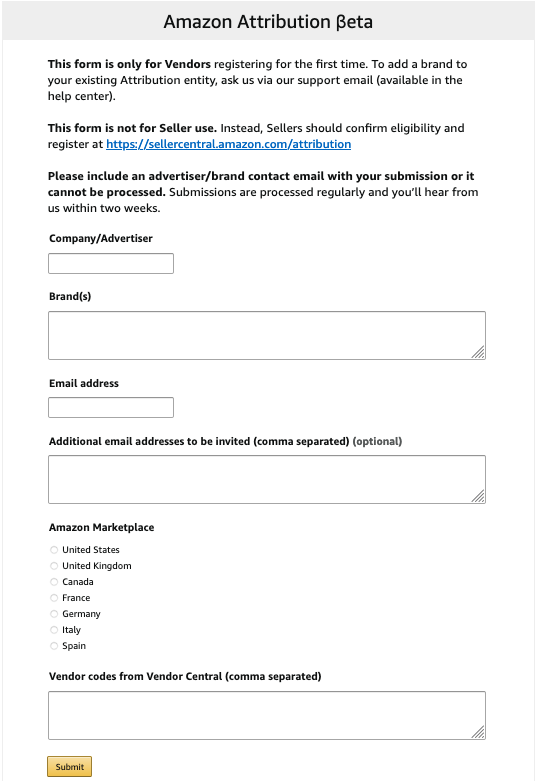
Once your account has been approved and set up, you can start matching products to the campaigns you’re tracking:
- Create a tag by clicking on the relevant advertiser’s name.
- Click “New order.”
- Select the “Set up an order” parameter.
- Choose the product you want to link to by searching for your products and clicking “Add.”
- Give a name and external ID to your attribution tag. I recommend being as obvious as possible with your name, so you know which link is which (Don’t forget you’ll have a separate tag for each of your products).
- Choose where you’re going to place this link: Facebook, AdWords, etc.
- The clickthrough URL is the URL of your product. Find your product on Amazon, copy the URL and paste it here.
- Click “Create,” and you’re done. You can now copy the Amazon Attribution tag and start using it in the wild.
Alternatives to Amazon Attribution
Amazon Attribution is an incredible tool, but unfortunately, it’s not available to everyone who sells on the platform. Luckily, there are several alternatives you can use instead.
Amazon Associates Tracking
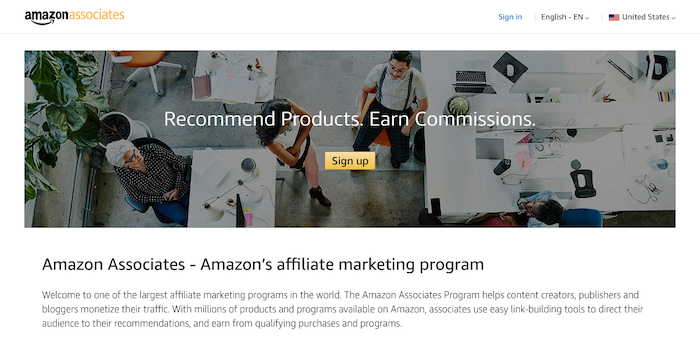
Amazon Associates tracking links were the most popular way to track external traffic to the store platform before Amazon Attribution. With Associates tracking links, you get paid a commission every time a customer converts.
Unfortunately, this tracking solution is nowhere near as in-depth as Amazon Attribution. You’ll only be able to see which items users bought, not their behavior on the site before conversion. Plus, Amazon Associates only get one tag. That means it can be hard to differentiate between traffic sources.
Pixelfy.me
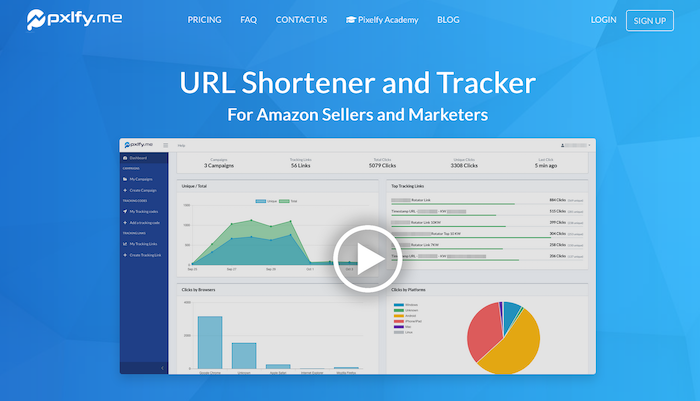
Pixelfy.me is a URL shortener and tracker built specifically for Amazon sellers. You can create and track every kind of Amazon link, including Supreme, Brand, Canonical, Store Front, Add-to-Cart URLs, and many more.
Pixelfy.me can track almost everything apart from conversions. While that’s not as comprehensive as Amazon Attribution, Pixelfy.me does let you pixel users to retarget them in the future.
Amazon Super URL Tool
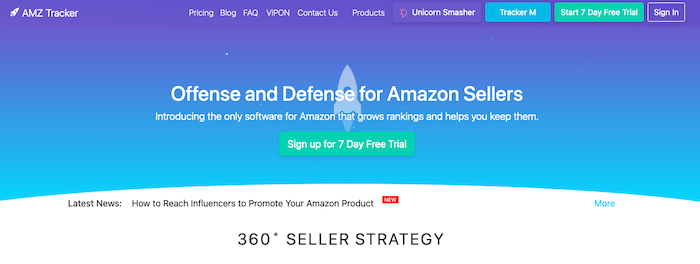
The Amazon Super URL Tool is part of the AMZ Tracker suite of tools. It does not offer sellers more insight into the way users shop their store, but it can significantly improve the quality of inbound traffic and boost sales as a result.
The platform’s special URL shortener makes Amazon believe visitors have searched for specific keywords on Amazon instead of going directly to the listing. Amazon should rank your products higher for these keywords, as a result, which can lead to more sales.
Conclusion
Amazon Attribution is the best way to track how off-site traffic performs on the Amazon platform. If you run external marketing campaigns for your Amazon store and are serious about optimizing your Amazon store, then Amazon Attribution is a must.
Not only can you optimize your marketing campaigns, but you can also increase conversions, too.
Creating Attribution tags is easy. Just follow my advice above or contact my team if you want an Amazon marketing agency to do the work for you.
How many external marketing campaigns are you currently running to Amazon?
via https://AiUpNow.com April 16, 2021 at 09:00AM by Neil Patel, Khareem Sudlow,
